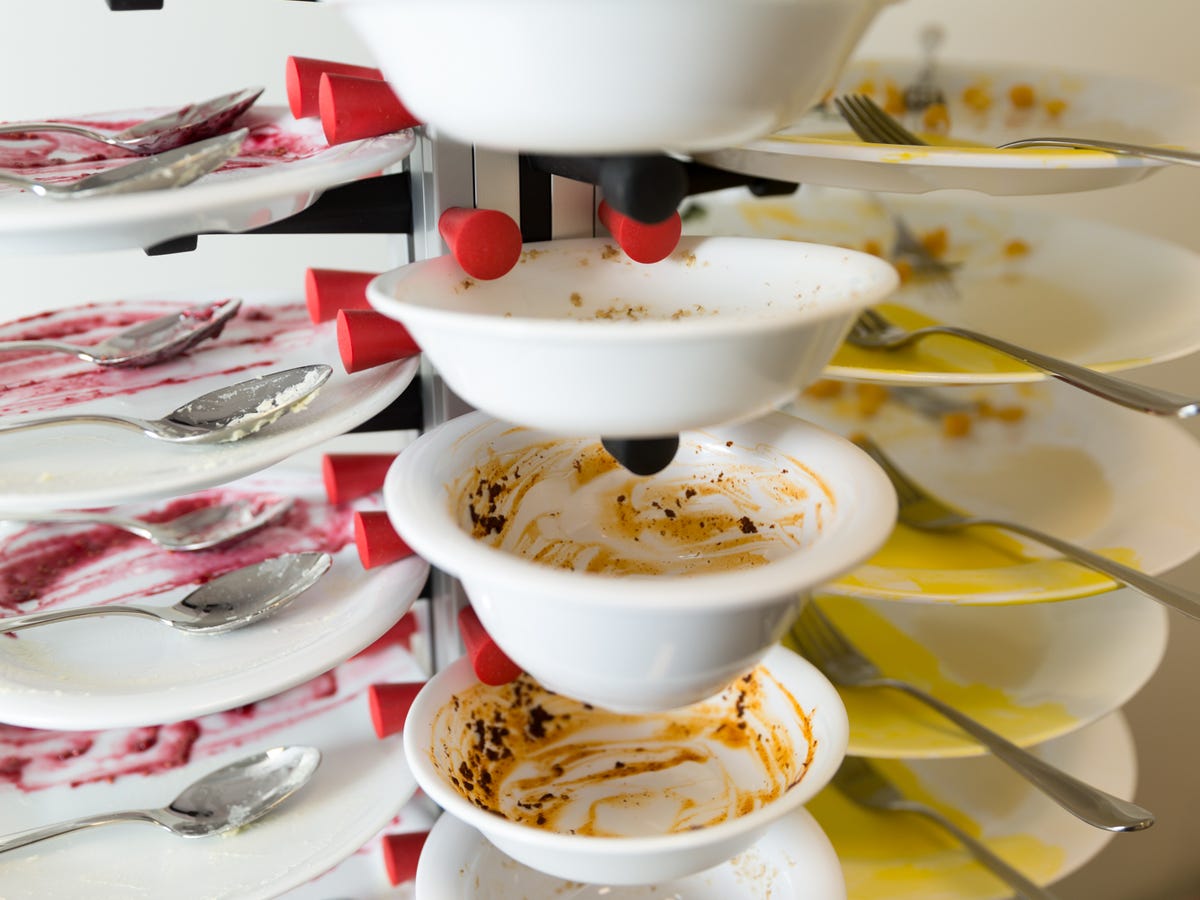Take a closer look at how we test dishwashers (pictures)
Ever wonder what goes into testing a dishwasher? Check out our pictures of the process.

Stress test extraordinaire
We test dishwashers by pushing them past their limits to see where those limits are, and to learn what they're good at and what they aren't. Here's our process for putting dishwashers to the test.
Crafting a cleaning test
Combining some elements from the tests of the Association of Home Appliance Manufacturers (AHAM) and the International Electrotechnical Commission (IEC) with some of our own ideas, we set some tough tasks for our dishwashers. Our most intricate and lengthy test checks a dishwasher's cleaning and drying capabilities, but we're also taking notes about performance, features and usability along the way.
A full plate of food
We start with 112 dishes and pieces of flatware. We make sure they're all perfectly clean and dry, so the only dirt on them when we load them into the dishwasher will be the dirt we put there. Then, we collect our foods. Our mix of foods is selected to test the different capabilities of a dishwasher. Honey, egg and peanut butter task it with removing sticky substances. Spinach and macaroni and cheese see how well its filter deals with bulk.
Precisely measured
Then, it's time to prep and measure the food. For each food, referred to as soil, we have a specific application process and a specific amount we use every time.
The application
Once the food's ready, we spread it on the plate. The small plates get half covered in raspberry preserves, and half covered in mashed potatoes.
Food art
The large plates get a quarter each of eggs, spinach, mac & cheese, and honey. When we're done, they almost look like a child's art project.
Silverware too
We need to see how well the dishwasher cleans silverware too, and these items get coated with plenty of food as well.
A coating for the glasses
The wine glasses get a coat of red wine. We coat coffee cups and saucers in coffee, and drinking glasses in tomato juice and grape juice.
Stacked and waiting
Once we've slathered every dish with food, we stack the plates and bowls on a rack so they don't touch each other and mess up our work. Then, we let the dirty dishes sit out for 24 hours.
Time to load
After 24 hours, we stack and load the dishes, following the manufacturer's recommended loading pattern.
Loading the upper rack
Glasses and bowls tend to go on the upper rack.
A complete upper rack
Here's a complete upper rack, again showing the GE PDT750SSFSS.
Ready to run
Then, it's time to run the dishwasher. For our tests, we use the normal cycle with no add-ons, because other cycles vary wildly from dishwasher to dishwasher, and we want to compare apples-to-apples results.
The aftermath
Once the dishwasher cycle finishes, we allow the machine to rest for 30 minutes. We're grading it on both cleanliness and dryness of dishes, and we give it a chance to help itself on the latter with residual heat.
Careful examination
After the 30-minute timer sounds, we remove the dishes one by one, and inspect them under a 4-foot LED array set to a specific color temperature. We look for any drops of water or water marks, as well as any remaining spots of food.
Finding flaws
We look for leftover spots like this one, as it tells us the water jets didn't get a strong-enough stream to this dish. That way we can tell you how good each dishwasher is at its job.
Making the grade
We grade the dishes based on the number and size of food spots and water spots we find, giving a separate numerical score for cleanliness and dryness for each dish. We plug those scores into an equation and get a total percent dry and clean score for the dishwasher.

